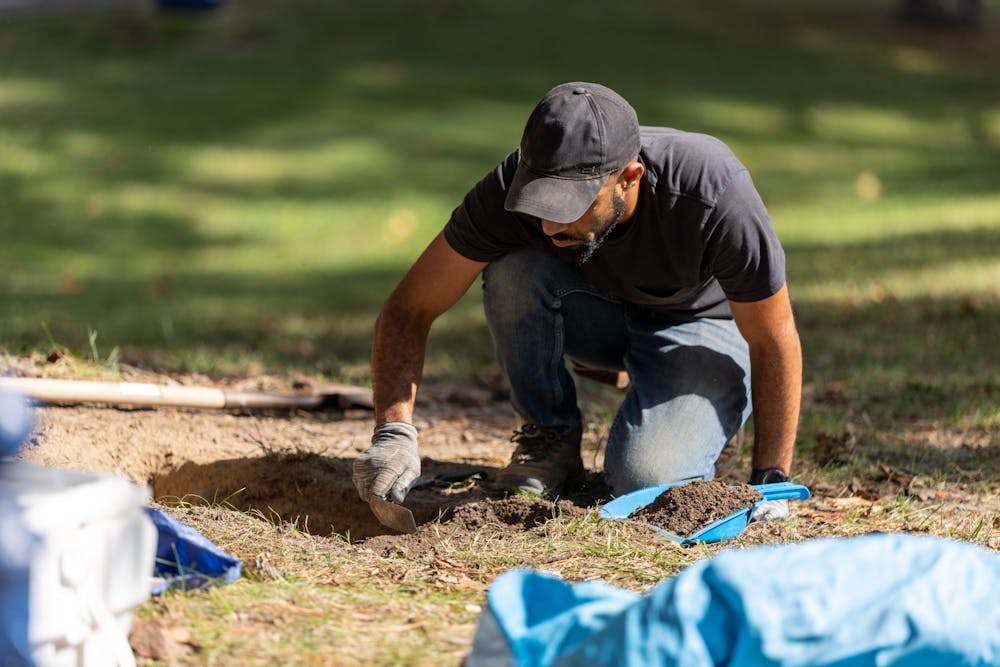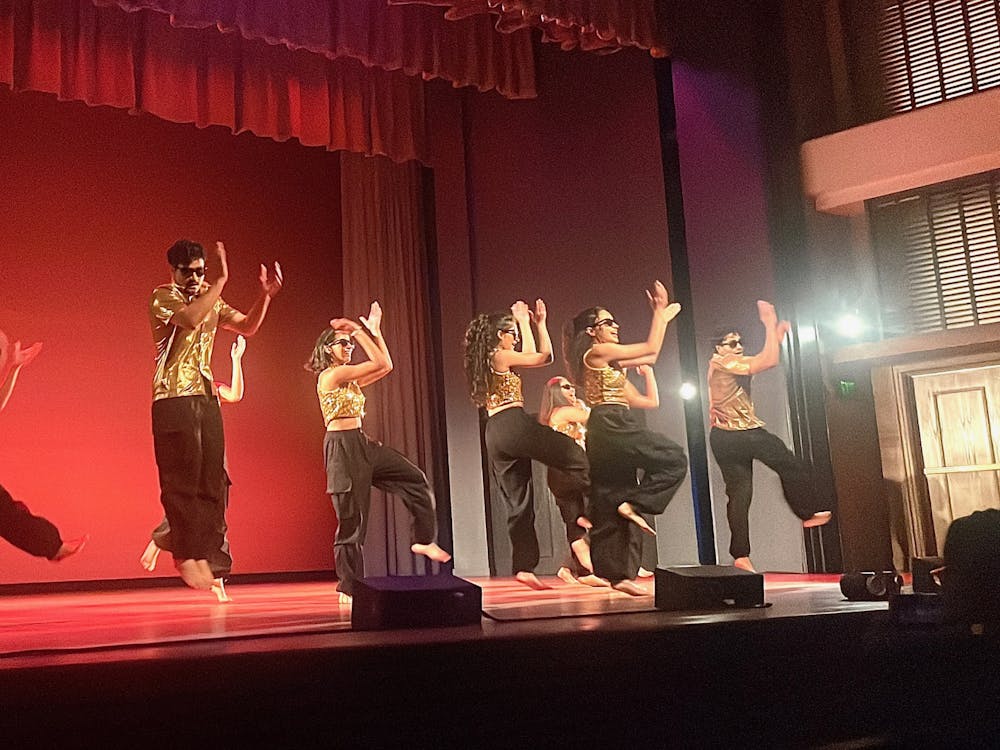The University of Richmond unveiled three designs for a memorial in honor of the Westham Burying Ground on campus last February. Community members will not see the end result until next year, despite continued archeological and architectural work to bring a memorial to the site
The Burying Ground Memorialization Committee decided to continue working with Baskervill, the architectural firm that delivered three memorial design concepts inspired by community input, said David Hale, executive vice president and chief operating officer. Part of the motivation to choose Baskervill is that the firm is also behind two other projects related to the history of slavery in Richmond. The final design, though, may not look exactly like any of the proposed designs and may not be inaugurated until the 2023-2024 academic year, Hale said.
Instead, a small group is working with the architects to create a final design that will channel the principles that community members put forth in discussions last year, Hale said. Senior Administrative Officer Amy Howard has been a part of those discussions and said the administration was looking at every detail of the project to ensure it would meet community members’ expectations.
“Wherever we get in the end, it's not going to look just like one of those [concepts],” she said. “These are concepts that are driving us toward the best use of making this a sacred space that's lightly touched and powerful. So that's the process. It's an evolution.”
Besides making sure the memorial does not disrupt the burial ground, descendants, students, faculty and staff said that the memorial should be unique, accessible and inviting and should balance sentiments of reconciliation and resilience, according to the committee’s final report.
Before the construction starts, Baskervill hired archeologist Timothy Roberts – also a community outreach coordinator for the Virginia Department of Historic Resources – to conduct fieldwork to evaluate the potential impact of the memorial on the burial ground. Roberts’ work in Richmond had already brought him to UR where he had to identify if the restoration of the creek in the Gambles Mills Eco-Corridor would disturb any potential burial sites, he said. No burial sites were found near the creek, but given the records demonstrating that human remains found on campus had been moved elsewhere, Roberts became involved, he said.
While he did some excavating, most of Roberts’ work at the burial ground site behind Fountain Hall required him to look at the ground penetrating radar survey, aerial photographs and maps, he said.
“The idea is that the results of these investigations will help inform a design concept that will avoid even potentially impacting any buried deposits and not even just graves,” Roberts said. “It's one of those things about archaeology, in a way: you don't know until you look.”
Archeological surveys are oftentimes seen as obstacles by developers, Roberts said. UR’s efforts to make sure the site would not be disturbed even though there was no legal requirement impressed Roberts, he said.
“The best part is being part of what should be a model for how to engage in this kind of work,” he said. “You start with the outreach, you start with all the noninvasive resources that you have at your disposal like these historic maps and so on, and then you use the lightest touch possible in constant communication, ideally, with the stakeholders.”
Once Roberts’ work is done and Baskervill zeros in on one design, there will be more opportunities for community members to provide input and, ultimately, the Board of Trustees will have to approve the project, Hale said. The work will not stop when the memorial, whatever shape it takes will be finished, Howard said.
“This is obviously different than most of our renovation or new construction projects on campus,” Hale said. “We want to be really thoughtful and invest in every step of the way here.”
Enjoy what you're reading?
Signup for our newsletter
Contact editor-in-chief Jackie Llanos at jackie.llanoshernandez@richmond.edu.
Support independent student media
You can make a tax-deductible donation by clicking the button below, which takes you to our secure PayPal account. The page is set up to receive contributions in whatever amount you designate. We look forward to using the money we raise to further our mission of providing honest and accurate information to students, faculty, staff, alumni and others in the general public.
Donate Now



